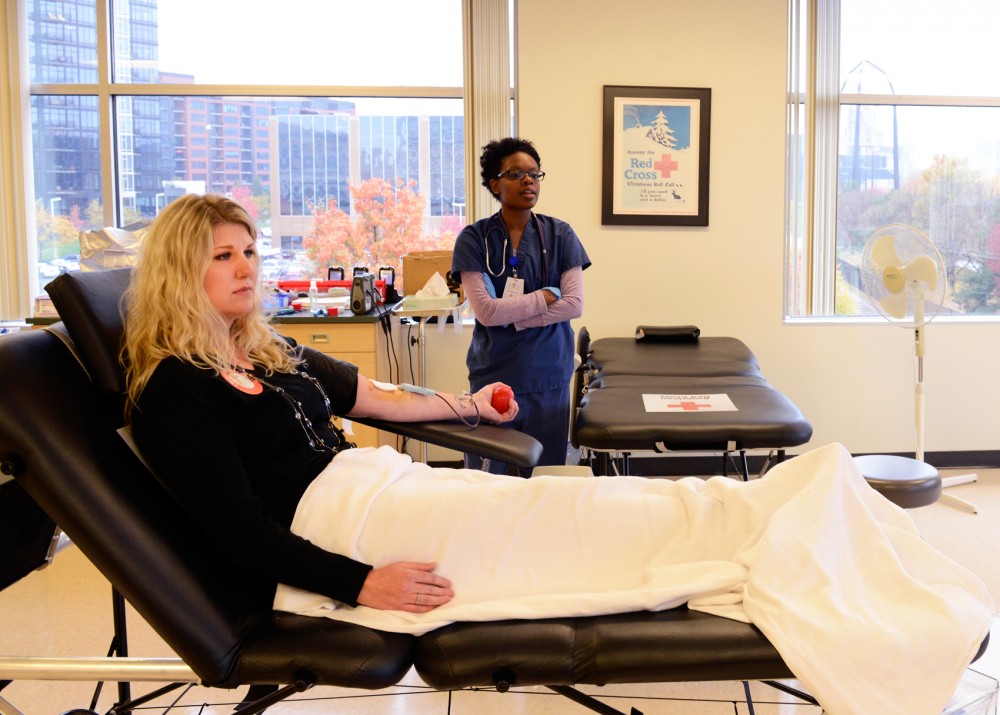Two University of Minnesota graduates are making a profit off what people give away for free: blood.
Ben Bowman and David Mitchell hope their online business will reduce the amount of wasted blood in hospitals and standardize the national price for blood. Still, their company could be at risk if medical technology advances in coming years force donation centers to consolidate.
The grads founded General Blood LLC shortly after graduation. The company buys units of blood from donation centers and sells them to hospitals nationwide for a 10 percent profit.
But Bowman said most donors are unaware their blood is sold to hospitals.
“People deserve to know how the system works,” he said. “We would encourage donation centers to be more transparent.”
According to an American Red Cross statement, a pint of blood averages a cost of $217.
Bowman said blood is the largest generic pharmaceutical product in the country and generates $6 billion in annual sales.
In 2011, hospitals reported 4.3 percent of unused blood units were discarded, according to the U.S. Department of Health and Human Services National Blood Collection and Utilization Survey.
Bowman said the waste comes from unpredictable supply and demand of blood and improper tracking of blood expiration dates once it reaches hospitals.
Because blood demand can be unexpected for hospitals, University Lab Medicine and Pathology Professor Dr. Jeffrey McCullough said they purchase enough blood to keep a supply buffer.
“It’s impossible to have the right amount of blood and the right types for the supply and demand in hospitals,” he said. “Some units don’t get used, but the extra is the hospital’s insurance policy.”
Bowman said he estimates hospital blood waste, which is self-reported, sits around 8 to 10 percent.
On the other hand, McCullough said he thinks 4 to 5 percent is more accurate.
“I don’t have a problem with 4 to 5 percent,” he said. “I’d have a problem with 10 percent, and I’d have a big problem with 20 percent.”
And because blood expires — red blood cells last 42 days, and platelets last for five — University entrepreneurial management junior and president of the Red Cross Blood
Donors student group Troy Gotch said waste shouldn’t be a concern.
“It’s a necessary safety precaution,” he said. “It’s similar to single-use needles in hospitals. There is waste, but it keeps patients safe.”
Industry changes
Ben Bowman is working with blood organizations nationwide to transfer the blood-selling industry online. He said he hopes listing the price per pint each hospital pays will set a national standard for blood sales.
Currently, the cost per unit of blood varies by location. The Red Cross said in a statement it determines their asking price per unit by factoring in the costs involved in producing and transporting the blood product to a specific hospital’s location.
“A pint of blood in Minnesota is traditionally much more inexpensive than a pint of blood in San Francisco,” Bowman said. “We think that’s inefficient.”
The Midwest is the main producer of donated blood, he said, and whatever isn’t used locally is shipped to cities, like San Francisco, where bigger populations make for
greater need.
Because blood is cheaper in the Midwest, Bowman said, he thinks they should be the main distributors of the country’s blood products.
“We don’t grow corn in Manhattan for a reason, it’s just too expensive,” he said.
Though McCullough said the U.S. is one of the only countries where blood donation centers operate as private businesses, the market could change for blood collectors in coming years.
Changes in medicine, like steering away from blood transfusions during surgery, could force blood donation centers to sell units at lower prices and, eventually, consolidate, Bowman said.








